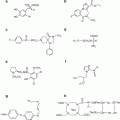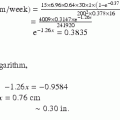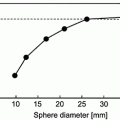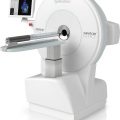(1)
Cleveland Clinic, Emeritus Staff, Cleveland, OH, USA
Keywords
PET/CT proceduresWhole-body imagingMyocardial imaging 18F-FDG 18F-Florbetapir 82Rb-RbClIntroduction
In this chapter, different protocols for common PET procedures are described to provide a general understanding of how a PET study is performed. Only five procedures are included, namely, whole-body PET imaging with 18F-FDG, PET/CT whole-body imaging with 18F-FDG, 18F-florbetapir PET/CT imaging of amyloid plaque in Alzheimer’s patients, myocardial perfusion imaging with 82Rb-RbCl, and myocardial metabolic imaging with 18F-FDG. The procedures described here are generic in that there are variations in the detail of each procedure from institution to institution. Different institutions employ different techniques in immobilizing the patient on the table. Use of CT contrast agents in PET/CT is still a debatable issue, and some investigators use them, while others do not. While glucose loading is essential for myocardial 18F-FDG studies in patients with low fasting glucose levels, there are varied opinions as to the lowest limit of glucose level at which glucose loading should be provided and what amount of glucose should be given orally. In lymphoma and colorectal studies, it is desirable to have a Foley catheter secured to the patient to eliminate extraneous activity in the bladder, but perhaps it is not universally employed by all.
In view of the above discussion, it is understandable that the procedures described below are a few among many with variations in detail, but the basics of PET or PET/CT imaging remain the same.
Whole-Body PET Imaging with 18F-FDG
Physician’s Directive
1.
A nuclear medicine physician fills out a scheduled patient’s history form indicating where the scan begins and ends on the body.
2.
If the patient weighs over 250 lbs, the physician authorizes a dosage of 18F-FDG higher than the normal dosage.
Patient Preparation
3.
The patient is instructed to fast 6 h prior to scan.
4.
Insert an IV catheter into the patient’s arm for administration of 18F-FDG.
5.
For melanoma patients, injection must not be made in the affected extremity. Injection should be made away from the affected area.
6.
A Foley catheter is required for patients with colorectal carcinoma and lymphoma, for voiding urine.
7.
Remove all metallic items such as belts, dentures, jewelry, bracelets, hearing aids, bra, etc., from the patient.
8.
The patient wears a snapless gown.
Dosage Administration
9.
Inject 18F-FDG (10–15 mCi or 370–555 MBq in a shielded syringe) into the patient through the IV catheter. Flush with 20-mL saline.
10.
The patient waits for 40–60 min with instructions to remain calm and quietly seated during this waiting period.
Scan
11.
Enter patient’s name, birth date, weight, and ID number into the computer.
12.
Obtain a blank transmission scan without the patient in the scanner for attenuation correction using the rotating 68Ge source before the first patient is done. This blank scan is used for all subsequent patients for the day.
13.
After the waiting period, the patient lies supine on the scan table with the head toward the PET scanner and with arms up or down depending on the area to be scanned.
14.
Position the patient inside the scanner to the upper limit of the scan as designated by the physician. This position is marked by the computer control on the console.
15.
The patient is then moved to the lower limit of the scan and the position is marked by the computer control on the console.
16.
The computer determines the length of the scan field from the positions marked in Steps 14 and 15. From the manufacturer’s whole-body scanner chart, determine the number of bed positions needed for the length of the scan field.
17.
Set the PHA at 430–650 keV.
18.
Enter into the computer all pertinent information, e.g., dosage of 18F-FDG, injection time, and number of bed positions.
19.
Position the patient to the upper limit of scan in the scanner.
20.
Collect a patient’s transmission scan with the 68Ge source.
21.
Start the patient’s emission scan collecting data for a preset count or time.
22.
Move the table to the next bed position and repeat Steps 19 and 20. Note: Steps 19–21 are automatically done by the computer control.
23.
The scanner stops when the lower limit of the scan is completed (i.e., scanning at all bed positions is completed).
24.
The patient is released after the complete acquisition of the data.
Reconstruction and Storage
25.
Attenuation correction factors are calculated from the blank transmission scan (Step 12) and patient transmission scan (Step 19). Reconstruct images using the corrected data with appropriate reconstruction algorithms (FBP or iterative method), provided by the manufacturer.
26.
Images are sent to the workstation for display and interpretation.
27.
Images are stored and archived in PACS for future use.
Whole-Body PET/CT Imaging with 18F-FDG
Physician Directive
1.
The nuclear physician evaluates the history of the patient and sets the scan limits of the body.
2.
The physician authorizes a higher dosage of 18F-FDG, if needed based on the patient’s weight.
Patient Preparation
3.
The patient is asked to fast for 6 h prior to scan.
4.
Remove metallic items from the patient, including dentures, pants with zipper, bra, belts, bracelets, etc.
5.
The patient wears a snapless gown.
6.




Insert an IV catheter in the patient’s arm for administration of 18F-FDG.
Stay updated, free articles. Join our Telegram channel

Full access? Get Clinical Tree






